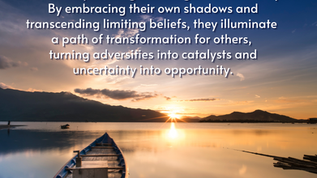Leadership Insights from Wild Geese Migration
The sight of wild geese flying in their iconic V-formation during migration is not just a remarkable natural phenomenon; it also offers valuable lessons in leadership and teamwork. These avian travelers exhibit exceptional adaptive leadership skills, enabling them to navigate long and arduous journeys, as well as respond to dynamic environmental challenges. In this article, we will explore the insights that can be gleaned from the adaptive leadership demonstrated by wild geese during migration and how these lessons can be applied to human organizations.

The V-Formation and Cooperative Leadership
One of the most striking features of wild geese's migration is their formation flying in a V-pattern. This shape is not a mere coincidence; it serves a purpose beyond aesthetics. Flying in a V-formation creates aerodynamic efficiencies that allow the geese to conserve energy and cover long distances more effectively. By drafting off each other's wake, the geese experience reduced air resistance, allowing them to fly up to 70% farther than if they were flying solo.
This cooperative leadership approach highlights the significance of teamwork and collaboration in achieving collective goals. The lead goose, at the apex of the V, sets the direction and takes the brunt of the wind resistance. As the lead goose tires, it falls back into the formation, and another goose takes its place. This rotation ensures that the flock operates at maximum efficiency, with each member taking on leadership roles when needed and supporting one another throughout the journey.
Shared Vision and Communication
Before embarking on their migration, geese engage in a ritual of honking, which serves as a form of communication. This honking helps reinforce the shared vision and align the group's objectives. In the same way, effective leaders in human organizations must establish a clear and compelling vision that inspires and motivates their team members. Open and transparent communication is essential for ensuring everyone understands their roles and responsibilities in achieving that vision.
Flexibility and Adaptability
The success of wild geese's migration relies heavily on their adaptability to ever-changing conditions. They encounter unpredictable weather patterns, strong winds, and other environmental challenges during their long journey. To navigate these obstacles, the flock must stay flexible and make real-time adjustments to their flight path.
Similarly, adaptive leaders must remain agile and open to change. In dynamic business environments, unforeseen challenges can emerge, necessitating quick decisions and adjustments to strategies. Embracing change and encouraging a culture of flexibility within an organization can enhance its resilience and ability to navigate uncertainties successfully.
Distributed Leadership and Empowerment
Wild geese demonstrate distributed leadership, where every member contributes to the overall success of the flock. The V-formation exemplifies a decentralized approach to leadership, where individual geese are empowered to take initiative and provide value to the group. This kind of empowerment fosters a sense of ownership and accountability among the team members.
Adaptive leaders in human organizations should also promote distributed leadership and empower their employees to make decisions and take responsibility for their actions. A culture that encourages autonomy and initiative can lead to increased innovation, creativity, and problem-solving capabilities within the organization.
Resilience and Supportive Culture
Wild geese face numerous obstacles during migration, such as fatigue and potential injuries. When a goose becomes sick or wounded, other geese do not abandon it. Instead, they demonstrate a strong sense of camaraderie and support by staying with the injured bird until it recovers or perishes.
This act of solidarity illustrates the importance of a supportive and resilient organizational culture. In times of crisis or adversity, a cohesive team that genuinely cares for one another will pull together to weather the storm. Developing a culture of empathy, support, and resilience can foster trust among team members and contribute to a more cohesive and high-performing organization.
The migratory flight of wild geese provides us with a wealth of insights into adaptive leadership. By flying in a V-formation, geese maximize efficiency and conserve energy, emphasizing the significance of teamwork and cooperative leadership. They communicate effectively, remain flexible and adaptable, exhibit distributed leadership, and demonstrate unwavering support for one another. Applying these lessons from the natural world to human organizations can foster an environment of success, resilience, and accomplishment, helping leaders navigate challenges and lead their teams to greater heights.
By Leksana TH



















